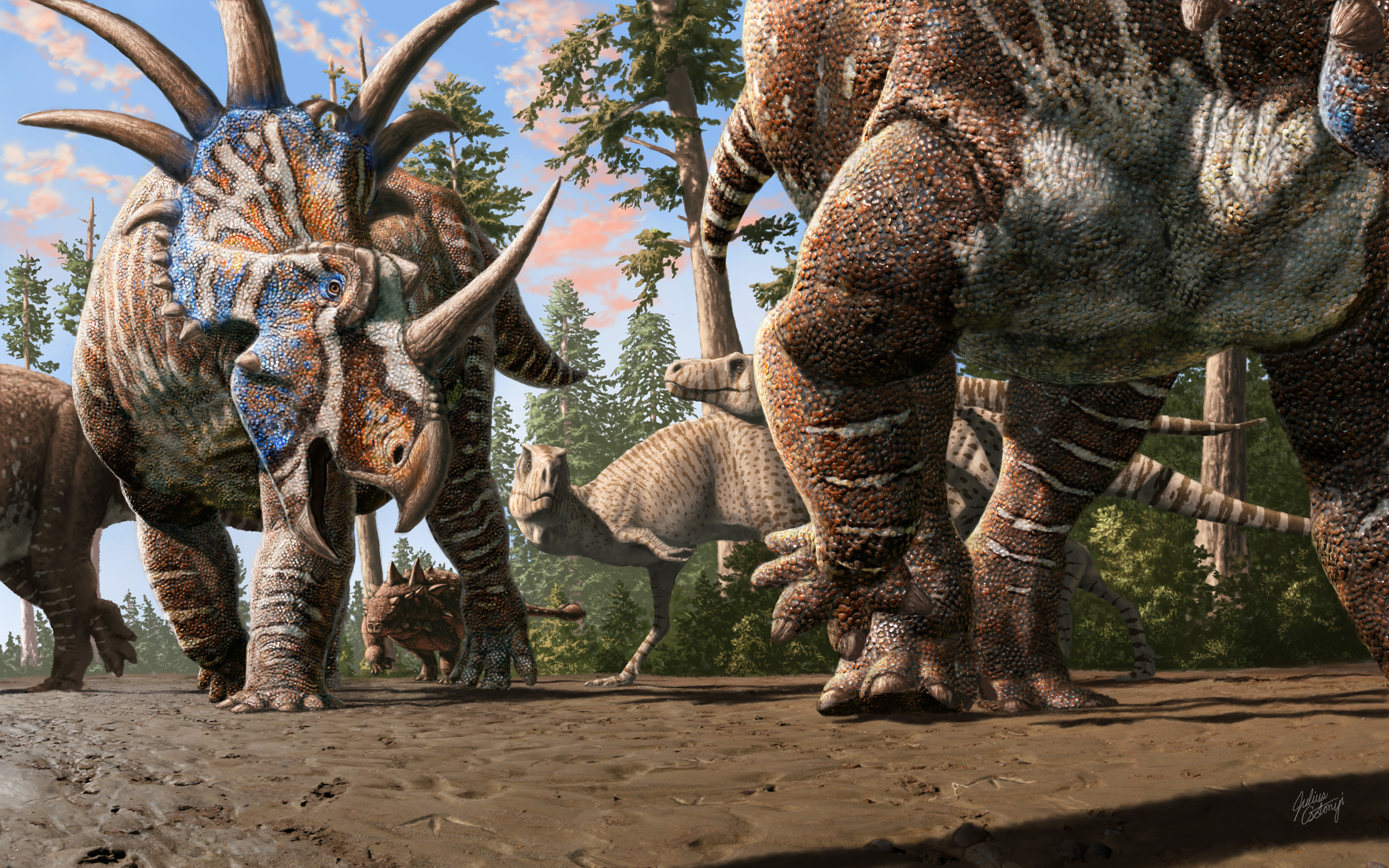Media release
From:
Dinosaur tracks show first evidence of multispecies herding
Footprints of a multispecies herd of dinosaurs discovered in Canada demonstrate the social interaction between different dinosaur species 76 million years ago, according to findings in a new study published today [23 July] in the journal PLOS One.
The new tracksite is the first discovery of its kind in Dinosaur Provincial Park in Alberta, Canada. The Park is world-famous for its abundant fossils but dinosaur footprints were virtually unknown.
The discovery, made during an international field course in July 2024, includes footprints from multiple dinosaur species walking alongside each other – providing the first evidence of mixed-species herding behaviour in dinosaurs, similar to how modern wildebeest and zebra travel together on the African plains.
The researchers were also surprised to find the tracks of two large tyrannosaurs walking side-by-side and perpendicular to the herd, raising the prospect that the multispecies herding may have been a defence strategy against common apex predators. However, more evidence is needed to confirm this.
The international team, led by Dr Brian Pickles (University of Reading, UK), Dr Phil Bell (University of New England, Australia), and Dr Caleb Brown (Royal Tyrrell Museum of Palaeontology, Canada), excavated 29 square metres of the site, revealing 13 ceratopsian (horned dinosaur) tracks from at least five animals walking side by side, with a probable ankylosaurid (armoured dinosaur) walking in the midst of the others.
One footprint of a small meat-eating dinosaur was also discovered. The tracksite extends further into the hillside.
Dr Phil Bell, University of New England, said: “I’ve collected dinosaur bones in Dinosaur Provincial Park for nearly 20 years, but I’d never given footprints much thought. This rim of rock had the look of mud that had been squelched out between your toes, and I was immediately intrigued.
“The tyrannosaur tracks give the sense that they were really eyeing up the herd, which is a pretty chilling thought, but we don’t know for certain whether they actually crossed paths.”
Dr Brian Pickles, University of Reading, said: "It was incredibly exciting to be walking in the footsteps of dinosaurs 76 million years after they laid them down.
“Using the new search images for these footprints, we have been able to discover several more tracksites within the varied terrain of the Park, which I am sure will tell us even more about how these fascinating creatures interacted with each other and behaved in their natural environment.”
Dr Caleb Brown, Royal Tyrrell Museum of Palaeontology, added: "This discovery shows just how much there is still to uncover in dinosaur palaeontology. Dinosaur Park is one of the best understood dinosaur assemblages globally, with more than a century of intense collection and study, but it is only now that we are getting a sense for its full potential for dinosaur trackways."
Notes to editors:
- Dinosaur Provincial Park is a UNESCO World Heritage Site located in Alberta, Canada.
- The field course was a collaboration between the University of Reading (UK), University of New England (Australia), and the Royal Tyrrell Museum of Palaeontology (Canada).
- The research paper has been published in the Open Access Journal PLOS One [INSERT LINK TO PAPER]. In addition to the above, the paper also involved academics from the following institutions: Macquarie University (Australia), University of Manitoba (Canada) and University of Alberta (Canada).
- DOI: https://doi.org/10.1371/journal.pone.0324913
- Images and interview opportunities are available upon request.
Multimedia




 Australia; International; NSW
Australia; International; NSW



